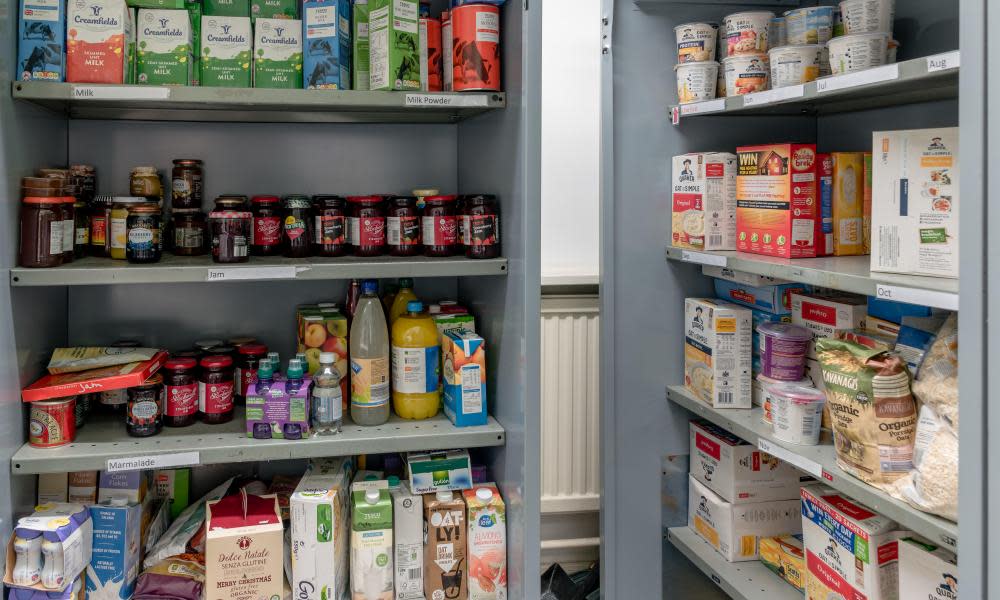Food banks supported 800,000 UK children in 2021-22, data shows

Families including 800,000 children were forced to turn to food banks to feed themselves as poverty levels started to rise again after the first year of the pandemic, the first official figures on UK food bank use show.
The statistics came in official poverty data, which revealed that the reduction in relative poverty achieved during the first year of the Covid crisis in 2020-21 was temporary and was reversed after ministers scrapped support measures.
Experts said poverty levels and food bank use would have risen rapidly since the latest data was collected in 2021-22 because of the removal of the £20-a-week uplift to universal credit in October 2021, and the emergence of a devastating cost of living crisis driven by soaring fuel and food costs.
A fifth of the UK population (14.4 million people) was in relative poverty in 2021-22, the Department for Work and Pensions (DWP) data shows, including 4.2 million children (29%), 8.1 million working-age adults and 2.1 million pensioners.
About 3% of the UK population had accessed a food bank at least once in the previous 12 months during 2021-22, though this rose to 16% of households claiming universal credit, further fuelling concerns that benefit payments are too low to cover everyday living costs.
By the same token, 6% of people nationally experienced high or very high food insecurity, meaning they struggled to afford sufficient food for them and their family. One-third (33%) of food-insecure households reported that they had used food banks in the previous 12 months.
Heather Buckingham of the Trussell Trust food bank network said the data showed thousands of people were already unable to afford the essentials even before the cost of living crisis began to bite. Since then, the trust’s own data indicated that “things have only got worse”.
Up to now, the government has not collected data on food bank use, even though they have been a significant part of the charity response to rising poverty for more than a decade. The Trussell Trust and the Independent Food Aid Network collect comprehensive data, which has shown food bank use rising over this period.
Anna Taylor, the executive director of the Food Foundation thinktank, said: “Government needs to now act on this data and seriously scrutinise why their policies are failing to protect struggling families from affording the basics and start setting some targets for reducing food insecurity levels, particularly amongst benefit claimants.”
The poverty estimates were contained in the households below average income (HBAI) statistics for 2021-22, drawing on the 2021-22 family resources survey. They also revealed:
In-work poverty remains high – half (54%) of people in poverty lived in a household where at least one adult was in work, while more than two-thirds of children in poverty (71%) lived in working families.
Child poverty rates were much higher among black (53%) and Asian (47%) families than white families (25%). About 44% of children in single-parent families, and 36% of children living in families where someone has a disability, were in poverty.
The HBAI statistics are the UK’s official source of poverty estimates. The latest figures were based on interviews with more than 16,000 households carried out between April 2021 and March 2022. The relative poverty line is defined as 60% of the median UK income.
The Resolution Foundation said that while the figures showed government measures had broadly protected household incomes during the pandemic, incomes had been “knocked for six by the ongoing cost of living crisis” and child poverty figures were likely to have risen accordingly.
The DWP did not comment on the commonly used relative poverty statistics, pointing instead to absolute poverty statistics, which it claimed were a better measure of living standards. The DWP’s preferred measure showed that poverty levels had remained stable year on year and were on a downward trend.

 Yahoo News
Yahoo News 
